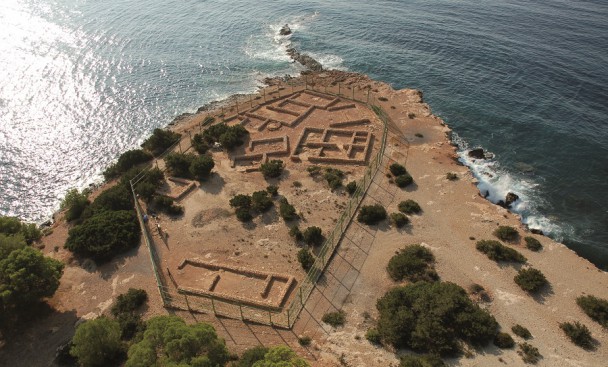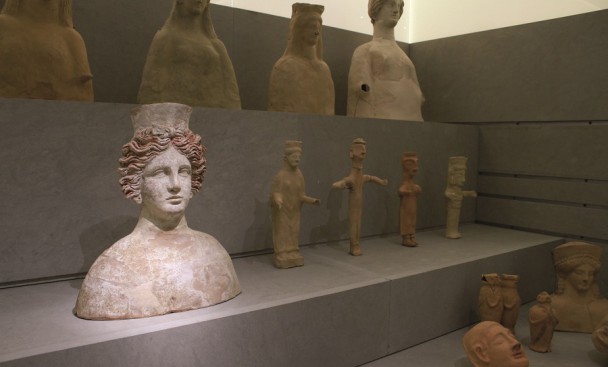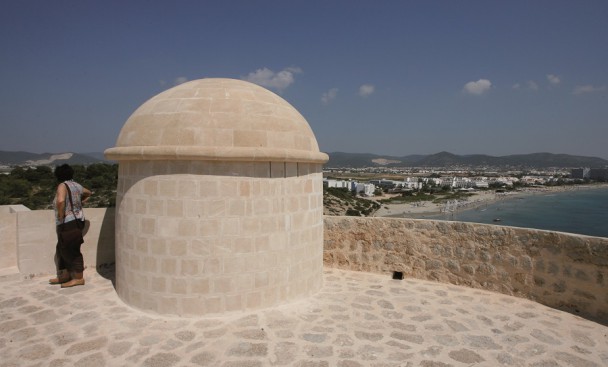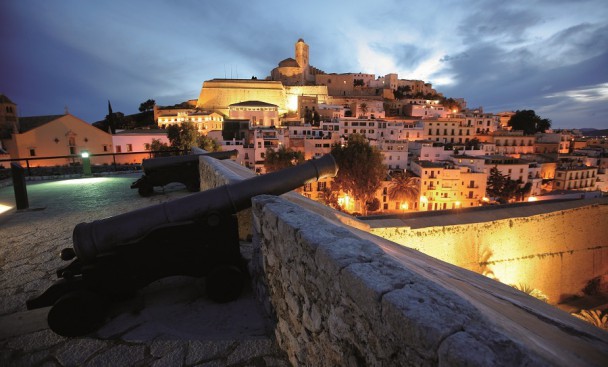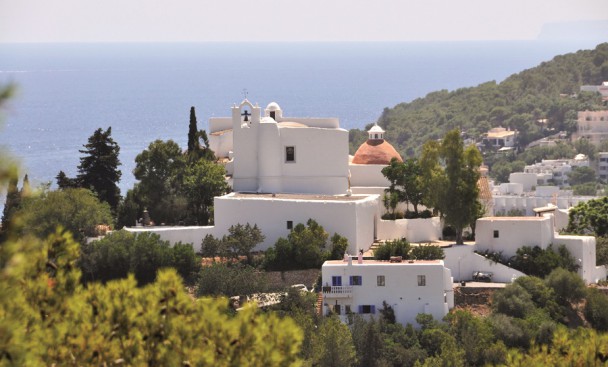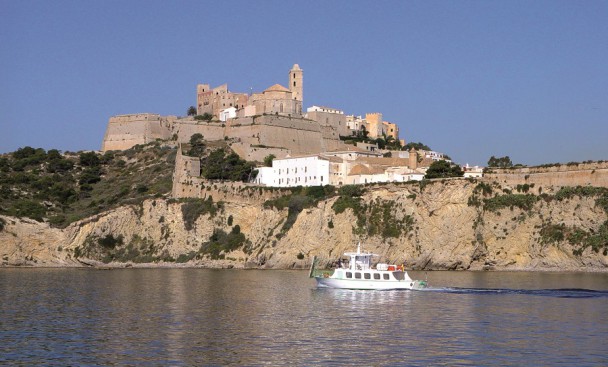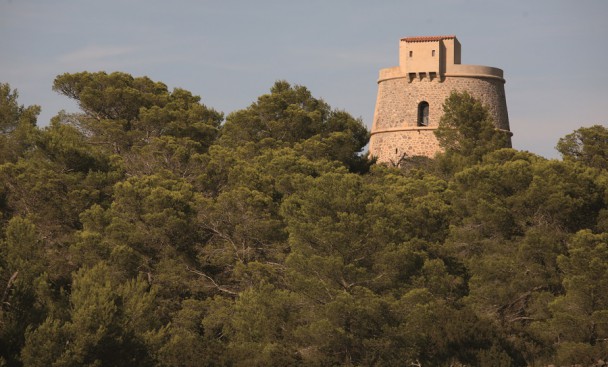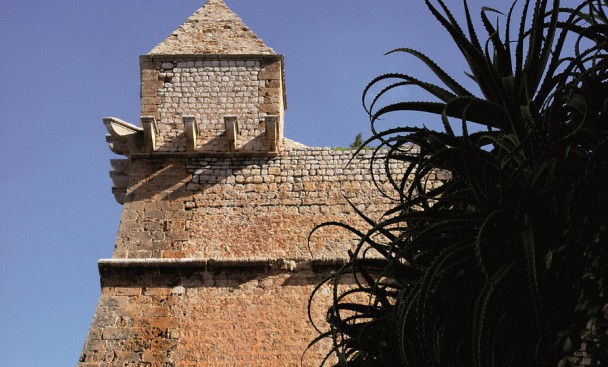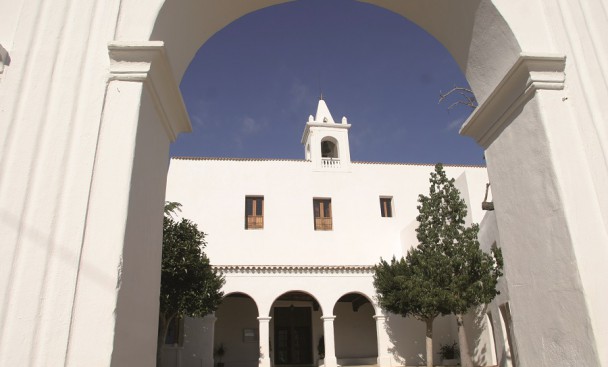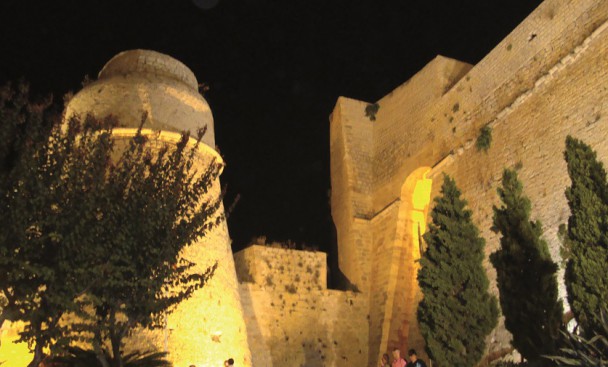A FASCINATING PAST
Ibiza is one of the oldest urban environments in Western Mediterranean, and the first in the Balearic archipelago. Its past is stunning and fundamental to understand its present, its cultural and social reality, through the mosaic of cultures that have steadily occupied it since 2700 AC.
The most important monument in Ibiza is the Renaissance wall of Dalt Vila, in Ibiza city, declared UNESCO World Heritage Site in 1999. There is an important historical and cultural patrimony scattered throughout the territory such as the sacred mount of Santa Eulària and Sant Miquel; the church-fortresses on each town, the singular defense towers, and wells and oil mills of Arab origin, declared Place of Cultural Interest. Throughout its history, Ibiza has always interacted with other cultures: Punics, Phoenicians, Romans, Arabs. All of them surrendered to its bright light, the purity of its sky, and the transparency of its water. When the Christians settled after the recapture, the island was surrounded by stone defensive towers from which to scan the horizon on the lookout for Berber pirate schooners that disembarked on the coast and ventured inland in search of women and food. Ibizan citizens were warned by sentries; they abandoned their perfectly whitened homes in the field, and ran to take shelter inside the city wall or in the towns’ fortified churches. Safe from invasion, Ibizan citizens still dedicatedly protect their historical inheritance.
The ancients’ legacy is generous and spectacular, and we understand that this diagram helps get an idea of everything that happened in this small island so we can understand it better.
2000-1600 BC
The first inhabitants of Ibiza date back to the Chalcolithic period. They came from the Mediterranean coastal arc. Examples: cave paintings. Sant Antoni.
8th Century BC
Ibiza as a Phoenician commercial center: First Phoenician-Punic settlement in Sa Caleta, Sant Josep. The urbanization process starts to develop in Ibiza at the beginning of the 6th century.
550-146 8th Century BC
Punic Ibiza, foundation of the Carthaginian Empire. Golden age for agriculture; Ibiza as a spiritual center: Tanit Goddess represents love, fertility, and death.
146 BC-79 AD
Ibiza becomes a Roman city.
5th– 9th Centuries AD
Goths and Visigoths in Europe. Ibiza is conquered by Vandals and Byzantines. They introduce the irrigation and rotation systems for crops.
902- 1235
The Arabs settle in Ibiza and transform the island. The economic growth is based on salt, agriculture, and fishing. There is Arab influence in many Ibizan customs.
1235
Ibiza is conquered by the Kingdom of Aragon on August 8 1235. It is said that a woman made the sheikh reveal the secret entrance to the Catalan troops. Catalan settlement, and with them, Christianity, their language, and customs.
16th Century
Instability in Western Mediterranean. Constant Turkish fleet and Algerian pirate attacks. The defensive system of Ibiza is rethought.
17th and 18th Centuries
The city grows within a protected area, as well as the neighborhoods of La Marina and Sa Penya. With the arrival of the first bishop, many churches are built all over the island. The towns take Christian names. Coast defense plan by building sentry towers.
19th Century
Ibiza grows thanks to the construction of new neighborhoods and emblematic buildings.
20th Century
And tourism arrives at Ibiza. The city becomes hippy territory thanks to its natural beauty and its fame of freedom. Nest for artists, writers, philosophers, stars, and visionaries.

